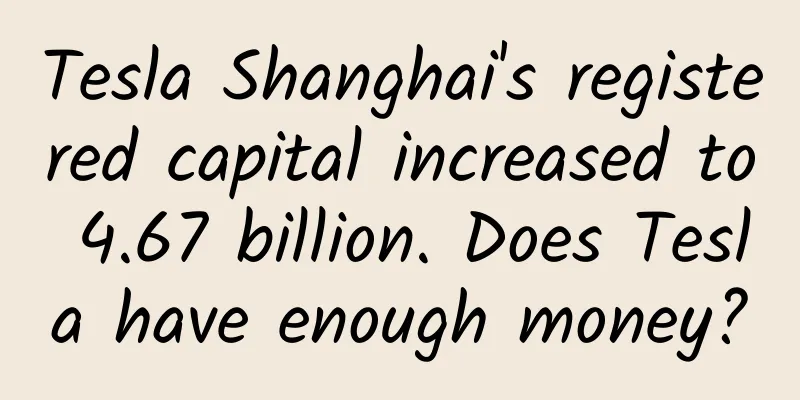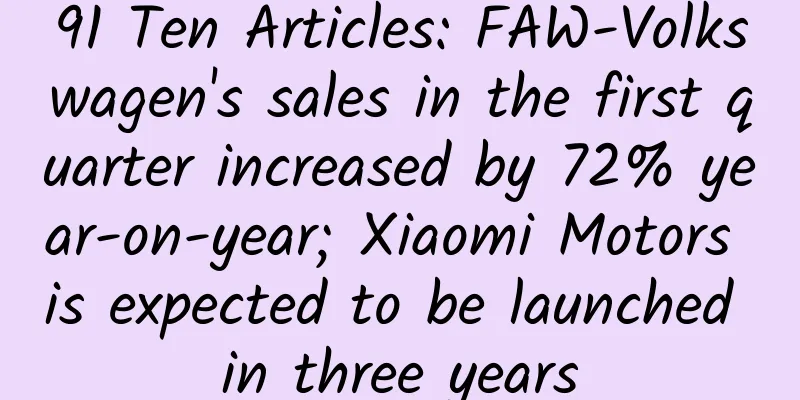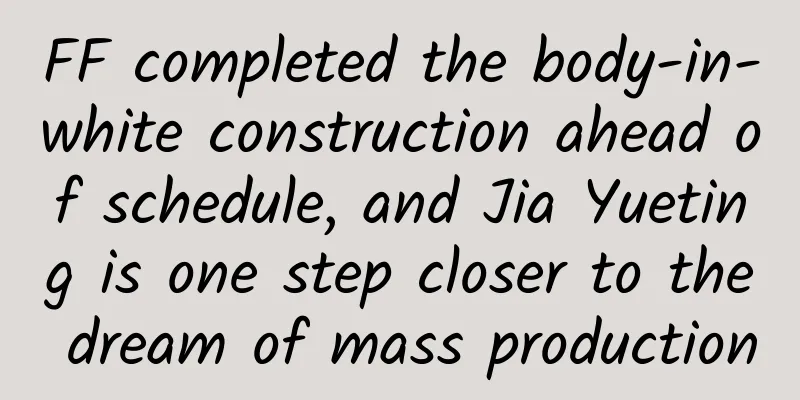Tesla Shanghai's registered capital increased to 4.67 billion. Does Tesla have enough money?

|
The official website of the Shanghai Municipal Administration for Industry and Commerce shows that the registered capital of Tesla (Shanghai) Co., Ltd. has increased from 100 million yuan to 4.67 billion yuan, and its business scope has also been further expanded to the manufacturing of key components for new energy vehicles such as battery management systems, motor management systems, electric vehicle electronic control integration, and electric vehicle drive motors. On May 10, 2018, when Tesla Shanghai Company just obtained its business license, its main business scope only included technology development, technical services, technical consulting and technology transfer in the fields of electric vehicles and parts, batteries, energy storage equipment, and photovoltaic products. On July 10 this year, when Tesla CEO Elon Musk confirmed that he would invest US$9 billion to build a pure electric vehicle factory in Shanghai with an annual production capacity of 500,000 vehicles, doubts were raised in the industry, saying that Tesla, which is short of funds, would have no use to build a factory in China. Tesla has been losing money for almost 14 years. After going public in 2010, it only made profits in the first quarter of 2013 and the third quarter of 2016. In 2017, Tesla's losses exceeded expectations. As of the fourth quarter of 2017, Tesla's operating cash flow was US$435.95 million and its loss was US$1.961 billion. The fact that Tesla Shanghai's assets increased to 4.67 billion yuan seems to indirectly respond to this question. Musk said as early as the earnings call that Tesla has no intention of increasing its equity and will support the construction of the Shanghai Tesla factory through "local financing." As the first wholly Chinese-owned auto company after the National Development and Reform Commission lifted restrictions on foreign ownership in China's auto industry, Tesla Shanghai has always been the focus of the global auto industry. Although the funding problem has been temporarily solved, it does not mean that Tesla's journey in China will be smooth sailing. The biggest obstacle may be the low-dimensional attack from traditional auto giants. China is the world's largest new energy vehicle market. According to data released by the International Energy Agency (IEA), China's electric vehicles accounted for 40% of the world's total in 2017. No auto giant can let go of this big pie in China. Most traditional auto giants, including BBA, have already announced their new energy vehicle plans in China. The time node for mass production of new energy vehicles in China may be earlier than Tesla. Among them, BMW Brilliance has entered the top ten of the automaker sales rankings with sales of 1,937 vehicles in July this year. Compared with traditional car companies, Tesla's Shanghai factory, which is expected to be completed in 2020, is obviously lagging behind. Tesla has never been a leader in technology and quality control. Perhaps its only advantage is that it is wholly owned. Of course, the key to the future of Tesla's Chinese factory lies in how Tesla can organically combine its own advantages with the national conditions of China's automobile industry, especially consumer psychology. After all, in terms of popularity alone, Tesla is still in the lead. As a winner of Toutiao's Qingyun Plan and Baijiahao's Bai+ Plan, the 2019 Baidu Digital Author of the Year, the Baijiahao's Most Popular Author in the Technology Field, the 2019 Sogou Technology and Culture Author, and the 2021 Baijiahao Quarterly Influential Creator, he has won many awards, including the 2013 Sohu Best Industry Media Person, the 2015 China New Media Entrepreneurship Competition Beijing Third Place, the 2015 Guangmang Experience Award, the 2015 China New Media Entrepreneurship Competition Finals Third Place, and the 2018 Baidu Dynamic Annual Powerful Celebrity. |
Recommend
Directly or indirectly, which is the better way to put a satellite into orbit?
In many people's impressions, satellite orbit...
Case analysis: How to implement promotion and operation layout strategy on Zhihu?
How to promote products or individuals on the Zhi...
HTC: Brand is more important than hardware parameters
At the launch of the HTC One Fashion Edition in co...
GSMA: Mobile Economy Report 2020
According to the "2020 Mobile Economy Report...
Don’t get too sunburned in the spring! What you need to know about sun protection in the spring...
...
TSMC: Nvidia Blackwell chip orders account for more than 70% of CoWoS-L packaging capacity in Q1 2024
According to a recent report by Taiwan media Econo...
It is a striking orange color, why is it called a "black box"?
Black Box Flight Data Recorder Can record the air...
4 tips to teach you how to use Xiaoguan Tea's marketing methods to create a hot-selling community
Do you think that Xiaoguan Tea became popular all...
Seeing the Earth's rotation with the naked eye! This scene is so shocking
"I saw the earth's rotation with my nake...
Landing page design tips for the education industry!
With the winter vacation approaching, the educati...
The "Song of the 24 Solar Terms" actually has eight lines, and you may not have sung all of them.
The beginning of winter has just passed, which me...
3 types of people must be cautious when getting a perm, not because it will damage the hair or make them look ugly, but because...
As the saying goes, the three things you need for...
Case | Marketing suggestions for 6 types of mobile financial users
Based on the research and analysis answers given ...
The only difference between a high-conversion landing page and a low-conversion landing page is the underlying logic!
Landing page planning has always been a headache ...









